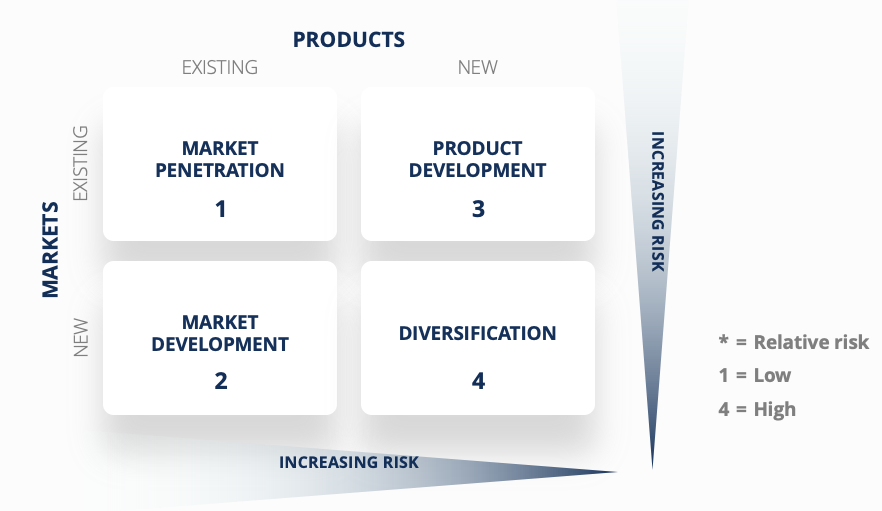
In today’s fast-paced business landscape, implementing an effective growth strategy is crucial for organizations aiming to thrive and stay ahead of the competition. Companies that fail to adapt and grow often find themselves left behind, struggling to maintain relevance and profitability.
What is a Growth Strategy?
A growth strategy is a well-defined plan that outlines how an organization intends to expand its operations, increase market share, and achieve sustainable growth over a specified timeframe. It involves carefully analyzing market trends, identifying opportunities, and utilizing resources to capitalize on those opportunities effectively.
Developing a growth strategy requires both short-term and long-term planning, considering various factors such as target market, competition, resources, and customer demands. By implementing an effective growth strategy, companies can position themselves for success, maximize profit potential, and establish themselves as market leaders.
The Importance of Growth Strategy Development
Without a clear growth strategy in place, companies risk stagnation, falling victim to unpredictable market shifts, and losing valuable market share. Growth strategy development offers numerous benefits for businesses:
1. Market Expansion
A growth strategy helps organizations identify and seize opportunities for market expansion. By assessing new demographics, untapped regions, or niche markets, companies can fuel their growth by reaching new customers who align with their offering. This expansion translates into increased revenue streams and sustainable growth.
2. Competitive Edge
Having a well-defined growth strategy enables companies to differentiate themselves from their competitors. By understanding market trends and gaps, businesses can develop unique selling propositions that make them stand out and attract customers over competitors. This competitive edge allows organizations to gain market share and cement their position in the industry.
3. Resource Optimization
Growth strategy development involves meticulously allocating resources to maximize their impact on growth initiatives. By identifying the most effective use of capital, human resources, and technology, companies can improve efficiency and streamline operations, ultimately boosting profitability.
4. Talent Acquisition and Retention
A robust growth strategy attracts top talent to organizations. When businesses showcase clear goals and opportunities for career advancement, they become more appealing to highly skilled professionals seeking growth-oriented companies. Additionally, aligning growth initiatives with employee development programs enhances retention, reducing turnover costs and ensuring a skilled workforce.
Key Steps in Growth Strategy Development
Developing an effective growth strategy requires a systematic approach. Below are the key steps to creating a growth strategy:
1. Market Analysis
Conduct a thorough analysis of your target market, including customer needs, trends, and preferences. Evaluate the competition and identify gaps that your organization can fill. This analysis sets the foundation for your growth strategy.
2. Set Clear Objectives
Establish specific, measurable, achievable, relevant, and time-bound (SMART) objectives for your growth strategy. Clear goals provide focus, enable effective planning, and ensure that progress can be tracked.
3. Identify Growth Opportunities
Based on your market analysis, identify potential growth opportunities and determine which ones align with your organization’s strengths and capabilities. Prioritize these opportunities based on their potential impact on growth and feasibility.
4. Develop Actionable Plans
Create actionable plans that outline the necessary steps to capitalize on identified growth opportunities. Establish key performance indicators (KPIs) to measure progress and ensure accountability.
5. Allocate Resources
Allocate resources effectively to support your growth plans. Consider financial investments, technology upgrades, hiring needs, and infrastructure requirements. Resource allocation should be aligned with your growth objectives and deliver the best returns.
6. Monitor and Adapt
Regularly monitor the progress of your growth strategy and evaluate its effectiveness. Use data-driven insights to adjust your plans if necessary, keeping your strategy flexible to adapt to changing market conditions.
7. Foster a Growth Mindset
Instill a growth mindset within the organization’s culture. Encourage innovation, collaboration, and continuous learning to fuel ongoing growth. Create a supportive environment that embraces change and empowers employees to contribute to the growth strategy.
Conclusion
An effective growth strategy is a driving force behind business success. It empowers organizations to expand their operations, outperform competitors, optimize resources, and attract top talent. By following the key steps in growth strategy development and fostering a growth-oriented culture, companies can pave the way for sustained growth and profitability in today’s dynamic business landscape.

